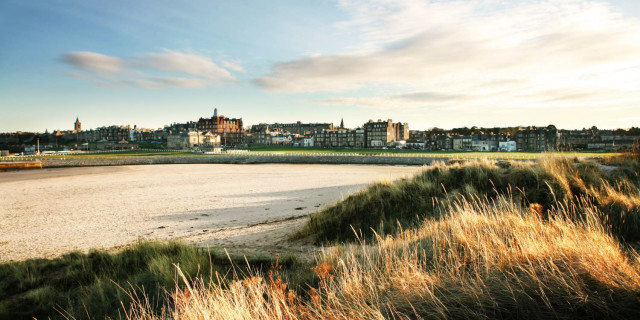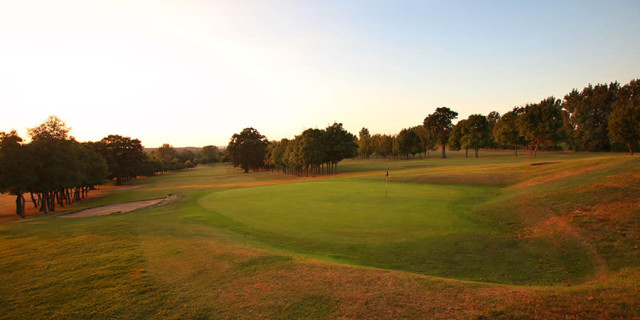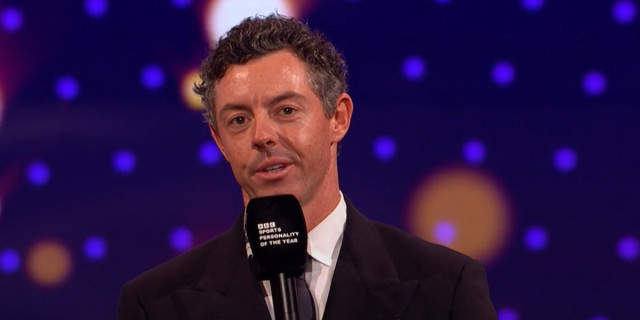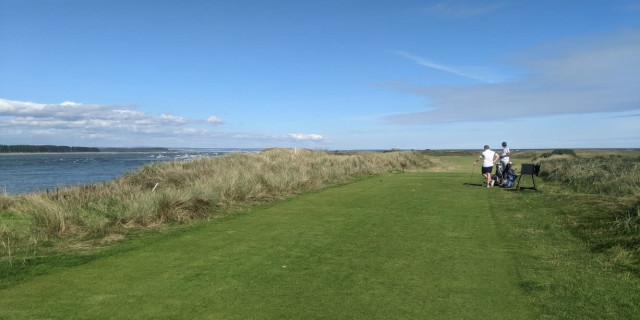
Why The Open is Golf's Best Major
There’s no denying that major championship golf is extra special. These are the events that provide the sternest of challenges with the world’s very best players – what’s not to like?
Luckily for us, we get to experience them on four occasions annually in the men's game. That is, of course, if there isn’t anything like COVID-19, that wickedly stole an Open Championship from us.
With The Open on the horizon, it got us thinking: what is the best major of them all? This will, understandably, not go down too well with our friends across the pond, but we’re making a case for The Open to be superior.
Allow me to explain why and who knows, maybe we can convert you too.
The Location

While all majors are essential viewing, there’s only one that’s held outside of America. Finally, Americans get to experience staying up until the early hours to see the conclusion. Not ideal, is it?
All jokes aside, it’s a welcomed change and I’m sure the American players enjoy the annual trip to Britain.
It is, however, the birthplace of the sport itself. With several stunning venues to host the championship, you know you’re going to get varied events with each and every passing year.
That’s what also makes The Open, The Open. Numerous golf courses are givien the chance to showcase their beauty and also a chance to portray their evilness.
The crème de la crème of golfing superstars have to trade in their warm climate for a grim, wet, windy and cold environment – and I’m all for it!
Let’s elaborate on the weather here, because there is a stark contrast between what will cause a disruption on American golf courses, compared to this side of the Atlantic.
On the PGA Tour, play is often suspended for poor weather. Sometimes, it’s warranted as there are potential storms in the area - where it becomes essential that you vacate the golf course as quickly as possible.
However, there are other times, where rain will prevent play or at least delay the resumption. As well know, that’s not possible in Britain because, quite frankly, the tournament would never be completed!
We must remember, a good proportion of the field play their golf almost exclusively in America. Where the weather is nice, the greens are soft and the bunkers won’t make you question your love for the game.
When they come to Britain, they are welcomed by rain, hail, wind and generally, some of the worst weather they will experience all year – welcome to The Open Championship.
The History

The Open Championship is the oldest golf tournament in the world that is still running today. The actual first event dates back to 1860, where it was contested over 36 holes and three 12-hole rounds at Prestwick Golf Club in Scotland. It was also played over one day, which sounds tiring just writing about it!
Through the years, The Open has given us amazing memories that we will hold onto forever. The man responsible? James Ogilvie Fairlie of Prestwick Golf Club. He decided to form a competition in 1860, ‘to be played for by professional golfers’.
As a result, Blackheath, Perth, Bruntsfield, Musselburgh and St Andrews golf clubs were all invited to send up to three of their best golfers to represent their golf clubs. The winner received the Challenge Belt, which was worth £25 and donated by the Earl of Eglinton.
The Claret Jug

While the green jacket may be the reflection of an exclusive club, the Claret Jug is surely the greatest golfing trophy there is.
On September 11, 1872, an agreement was reached between Prestwick, The Royal and Ancient Golf Club and the Honourable Company of Edinburgh Golfers. They had decided that each of the three clubs would contribute £10 towards the cost of a new trophy – the Claret Jug.
It wasn’t labelled as such back then, instead they opted for the Golf Champion Trophy, which seems a little unoriginal(!) Alongside the trophy, was also the agreement that the three clubs would rotate hosting rights of The Open Championship.
Unfortunately, these discussions took place too late for the trophy to be presented to the 1872 winner, who was Young Tom Morris. He was issued a medal inscribed ‘The Golf Champion Trophy’ instead.
Having noted that, he was the first man to be engraved onto the Claret Jug as the 1872 winner and as a result of that year, medals have been given to and kept by the winner ever since.
Links Golf

True links courses are generally exclusively found within Britain & Ireland and they offer a mighty challenge to anyone looking to conquer one. The land that is used for a links course is usually characterised by an undulating surface, dunes and sandy soil.
As aforementioned, a lot of modern golf courses allow the golfer to flag hunt and the ball will usually come to a halt rapidly. This won’t happen at a links course and definitely not at The Open!
Players will be forced to land the ball short of the green and allow it to release towards the target, which adds an element of estimation, which equates to more risk. More risk = more entertainment, right?
Links golf requires you to display your versatility as a golfer. Wind up? Better hit that skippy, low shot into the green. Don’t miss the fairway, the thick is too rough. Also, avoid the small but deep pot bunkers at all costs, no fun being there.
Finally, many traditional links courses have an outward nine in one direction along the coast and then, when the golfer is coming back inward, the wind will be from the opposing side – never letting the player to settle.
They provide the ultimate test, for the ultimate golfer. Many struggle, but some, some may have cracked the method of tackling links golf.
Tom Watson is the most successful American in Open history to date. He has won on five occasions, meaning he’s in the company of James Braid, John Henry Taylor and Peter Thomson, just one title behind Harry Vardon.
Seve Ballesteros is another man who knew how to play golf at its toughest difficulty, with three Open Championship wins.
Nick Faldo joins Ballesteros on this list with three wins, becoming the most successful British player in contemporary history.
Home of Golf

How many other majors can say that their competition is contested at the home of golf? None, only The Open! On 29 occasions too, if we’re being exact.
St Andrews deserves a mention because, well, it’s St Andrews. It’s the home of golf!
Golf was first played here back in the early 15th century, before King James II of Scotland placed a ban on the sport as young men were focusing on golf as opposed to archery – a prohibition that lasted a whopping 45 years!
Additionally, Tiger Woods was asked if there’s anything that he wants to experience in golf. His answer was to play St Andrews clockwise (original design) which would be playing the current course backwards.
Founder of Augusta National, Bobby Jones, also has his share of experiences at St Andrews – not initially positive, either.
He first played there during the 1921 Open Championship and during the third round, he infamously found a bunker on the 11th hole and after four attempts at getting out, he lost his temper and refused to hand his scorecard in at the conclusion, effectively withdrawing himself.
He did continue in the fourth round, however, but he was officially withdrawn from any potential prize funds.
He publicly noted his discourse for the Old Course, and the local press reacted by calling him an ‘ordinary boy’. Still, there was time for redemption.
When Jones won The Open in 1927, he impressed onlookers as he suggested that the trophy stay at the Royal and Ancient Golf Club and to not return to Atlanta with him.
Once again, the American would triumph at St Andrews, this time in the 1930 Amateur. The fourth hole, which was a par-5 but has since been developed into a par-4, was the location for an albatross as Jones holed out from a fairway bunker.
In 1958, Jones’ relationship with St Andrews was etched into eternity. The man who, at one time, hated the core of St Andrews, was named a Freeman of the City and became only the second American to receive such an honour – after Benjamin Franklin in 1759.
Jones once stated, “I could take out my life everything except my experiences at St Andrews and I would still have a rich, full life.”
And that’s the outcome when a special person spends so much time at a special place.
On a separate note, no other UK venue has hosted The Open on more occasions than St Andrews. And, if we’re being honest, no venue deserves it more than the home of golf.
We have explored several elements of The Open Championship that makes it unique and exceptional.
It is the only major held outside of America; it is the oldest professional golf tournament that remains to this day; the Claret Jug and its rich history is craved by every golfer and its frequently contested at the home of golf – that’s why The Open is golf’s best major.
Related Content

The oldest & most prestigious major, a trip to The Open is a must for every golf fan. From tickets and transfers to hospitality & golf, Golfbreaks.com can build the perfect package to help you experience The Open in style.
Tags: The Open PGA Tour european tour daily picks









